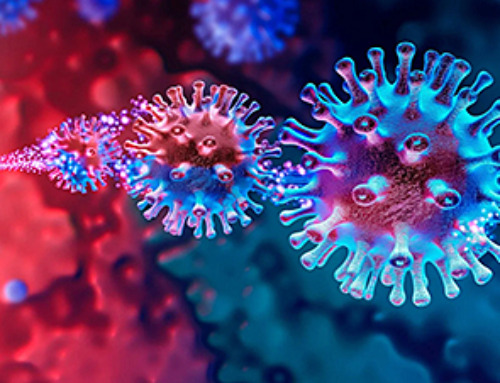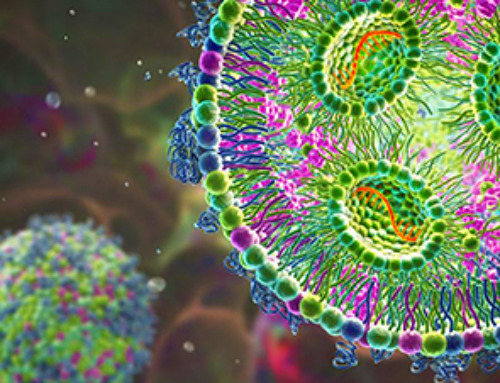For more than three months the patient struggled against Covid-19. His immune system was already in a bad way when he caught the virus – he had been receiving a drug treatment for lymphoma, a type of blood cancer, that depleted some of his immune cells. With fewer of the usual defences against infection, the virus was able to spread in his body relatively unchecked.
As doctors tried to help the elderly patient fight the virus, they gave him blood plasma collected from people who had already recovered from Covid-19. Contained within this milky-brown liquid – also known as convalescent plasma – were antibodies against the virus that might help to neutralise it.
Over the course of 101 days as they treated the man, clinicians at Addenbrookes Hospital in Cambridge, UK, took 23 swab samples as he fought against the disease. Each swab was sent off to a nearby laboratory to be analysed. But when virologists looked at the virus’s genetic material in the samples, they noticed something astonishing – Covid-19 was evolving before their eyes.
“We saw some remarkable changes in the virus over that time,” says Ravinda Gupta, an infectious diseases consultant at the hospital and a clinical microbiologist at the University of Cambridge who analysed the patient’s samples. “We saw mutations that seemed to suggest the virus was showing signs of adaptation to avoid the antibodies in the convalescent plasma treatment. It was the first time we had seen something like this happening in a person in real time.”
Nearly a year after the global Covid-19 pandemic started, the issue of mutations looms large. New variants capable of spreading faster are emerging and leading to inevitable questions about whether they will make the newly approved vaccines less effective. To date, there is little evidence they are, but scientists are already starting to explore how the Covid-19 virus will mutate in the future and whether they might be able to head it off. In the first of a two part series looking at Covid-19 mutations, we look at what they have learned so far.
Among the mutations Gupta and his colleagues identified was a deletion of two amino acids – known as H69 and V70 – in the spike protein sitting on the outside of the Covid-19 virus. This protein plays a key role in the ability of the coronavirus to infect cells.
The oily capsule that surrounds most of the virus is studded with these spikes sticking outwards, making it look like a crown when viewed through an electron microscope. It is this appearance that gives the coronavirus family its name – corona is Latin for crown. The spikes are also the main way Covid-19 recognises the cells it can infect and helps the virus penetrate them.
When Gupta and his team looked closer at the spike protein deletion they had spotted, it produced worrying results. “We did some infection experiments using artificial viruses and they showed that the H69/V70 deletion mutation increases the infectivity by twofold,” says Gupta. This prompted the researchers to scour the international genetic databases of Covid-19. There they found that something more alarming was taking place.
“We wanted to see what was happening worldwide and we stumbled upon this big expanding group of [H69/V70 deletion] sequences in the UK,” says Gupta. “When we looked more closely, we found that there was a new variant causing a big outbreak.”
News
Miller School Researchers Pioneer Nanovanilloid-Based Brain Cooling for Traumatic Injury
A multidisciplinary team at the University of Miami Miller School of Medicine has developed a breakthrough nanodrug platform that may prove beneficial for rapid, targeted therapeutic hypothermia after traumatic brain injury (TBI). Their work, published in ACS [...]
COVID-19 still claims more than 100,000 US lives each year
Centers for Disease Control and Prevention researchers report national estimates of 43.6 million COVID-19-associated illnesses and 101,300 deaths in the US during October 2022 to September 2023, plus 33.0 million illnesses and 100,800 deaths [...]
Nanomedicine in 2026: Experts Predict the Year Ahead
Progress in nanomedicine is almost as fast as the science is small. Over the last year, we've seen an abundance of headlines covering medical R&D at the nanoscale: polymer-coated nanoparticles targeting ovarian cancer, Albumin recruiting nanoparticles for [...]
Lipid nanoparticles could unlock access for millions of autoimmune patients
Capstan Therapeutics scientists demonstrate that lipid nanoparticles can engineer CAR T cells within the body without laboratory cell manufacturing and ex vivo expansion. The method using targeted lipid nanoparticles (tLNPs) is designed to deliver [...]
The Brain’s Strange Way of Computing Could Explain Consciousness
Consciousness may emerge not from code, but from the way living brains physically compute. Discussions about consciousness often stall between two deeply rooted viewpoints. One is computational functionalism, which holds that cognition can be [...]
First breathing ‘lung-on-chip’ developed using genetically identical cells
Researchers at the Francis Crick Institute and AlveoliX have developed the first human lung-on-chip model using stem cells taken from only one person. These chips simulate breathing motions and lung disease in an individual, [...]
Cell Membranes May Act Like Tiny Power Generators
Living cells may generate electricity through the natural motion of their membranes. These fast electrical signals could play a role in how cells communicate and sense their surroundings. Scientists have proposed a new theoretical [...]
This Viral RNA Structure Could Lead to a Universal Antiviral Drug
Researchers identify a shared RNA-protein interaction that could lead to broad-spectrum antiviral treatments for enteroviruses. A new study from the University of Maryland, Baltimore County (UMBC), published in Nature Communications, explains how enteroviruses begin reproducing [...]
New study suggests a way to rejuvenate the immune system
Stimulating the liver to produce some of the signals of the thymus can reverse age-related declines in T-cell populations and enhance response to vaccination. As people age, their immune system function declines. T cell [...]
Nerve Damage Can Disrupt Immunity Across the Entire Body
A single nerve injury can quietly reshape the immune system across the entire body. Preclinical research from McGill University suggests that nerve injuries may lead to long-lasting changes in the immune system, and these [...]
Fake Science Is Growing Faster Than Legitimate Research, New Study Warns
New research reveals organized networks linking paper mills, intermediaries, and compromised academic journals Organized scientific fraud is becoming increasingly common, ranging from fabricated research to the buying and selling of authorship and citations, according [...]
Scientists Unlock a New Way to Hear the Brain’s Hidden Language
Scientists can finally hear the brain’s quietest messages—unlocking the hidden code behind how neurons think, decide, and remember. Scientists have created a new protein that can capture the incoming chemical signals received by brain [...]
Does being infected or vaccinated first influence COVID-19 immunity?
A new study analyzing the immune response to COVID-19 in a Catalan cohort of health workers sheds light on an important question: does it matter whether a person was first infected or first vaccinated? [...]
We May Never Know if AI Is Conscious, Says Cambridge Philosopher
As claims about conscious AI grow louder, a Cambridge philosopher argues that we lack the evidence to know whether machines can truly be conscious, let alone morally significant. A philosopher at the University of [...]
AI Helped Scientists Stop a Virus With One Tiny Change
Using AI, researchers identified one tiny molecular interaction that viruses need to infect cells. Disrupting it stopped the virus before infection could begin. Washington State University scientists have uncovered a method to interfere with a key [...]
Deadly Hospital Fungus May Finally Have a Weakness
A deadly, drug-resistant hospital fungus may finally have a weakness—and scientists think they’ve found it. Researchers have identified a genetic process that could open the door to new treatments for a dangerous fungal infection [...]





















